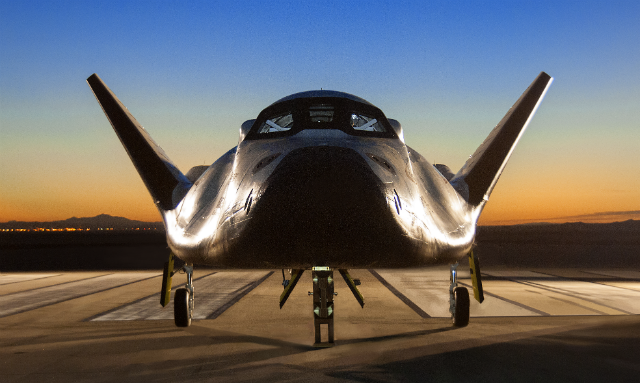The US Government Accountability Office has put an end to Sierra Nevada Corporation’s dream of providing NASA with a lifting body spaceplane as part of the agency’s plan to replace the Space Shuttle’s astronaut transport capability with spacecraft provided by the private sector.
SNC appealed against NASA’s September 2014 choice of proposals by Boeing and SpaceX over its Dream Chaser craft to receive late-stage development funding under NASA’s Commercial Crew Transportation Capability contract (CCtCap). However, the GAO has denied that protest and supports NASA’s conclusion that the Boeing CST-100 and SpaceX Dragon capsules are the best-value options.
All three reusable options have been designed to carry up to seven astronauts, with crewed flights from US soil to the International Space Station planned to commence in 2017. The CST-100 and Dragon are capsules, designed for sea and land landings, respectively, while Dream Chaser would launch atop an Atlas V rocket and return for a runway landing. The USA has had no capability to fly astronauts since the 2011 retirement of the Space Shuttle fleet, and so has bought rides to the ISS from Russia, aboard Soyuz rockets from Baikonur in Kazakhstan.
In response to the GAO decision, SNC describes itself as “privileged” to have taken part in the Commercial Crew programme, and adds that it “also plans to further the development and testing of the Dream Chaser, and is making significant progress in its vehicle design and test programme”.
The exact status of Dream Chaser development is not clear, but the programme would appear to be on hold bar all but conceptual work. Following NASA’s decision in favour of Boeing and SpaceX, SNC laid-off about 100 people working on the Dream Chaser programme.
The October 2013 drop test of an aerodynamic model of the spaceplane from 12,500ft appears to have validated its airworthiness and autonomous flight capabilities, although the short flight ended in a crash landing at Edwards AFB when its landing gear collapsed following touchdown.
Just days after NASA’s Commercial Crew decision in September, SNC unveiled a concept realised with air launched systems developer Stratolauncher for a smaller, three-person version of its spaceplane. And, under a 2014 agreement with the European Space Agency and Germany’s DLR aerospace centre, the parties will explore ways to exploit Dream Chaser or its variants beyond its original goal of transporting astronauts or cargo to and from the ISS. That agreement is understood to imply the combination of SNC spaceplane technologies with re-entry technologies being developed in Europe, and possible launches atop Ariane rockets from the European launch site in Kourou, French Guiana.
Meanwhile, Dragon – designed from the start for adaptation to a crew-carrying configuration – has already been proven as a viable vehicle for transporting cargo to and from the ISS. Boeing’s CST-100 is being readied for a pad abort test in 2016, its first uncrewed flight in early 2017 and the first crewed flight to the ISS in mid-2017.

Seen at dawn, heading to sunset
NASA
Source: FlightGlobal.com


























